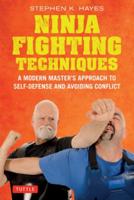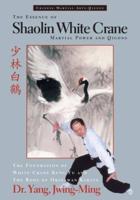Publisher's Synopsis
Karate, Judo, Kenpo, Chinese Boxing (Kung Fu), and Western boxing are some of the types of combat methods that are used into Kajukenbo, which is a unique martial art that mixes components from a variety of fighting disciplines.
It was established in Hawaii in the late 1940s by a group of martial artists, one of whom was Adriano Emperado. Their goal was to design a self-defense system that was both effective and practical, and that would be accessible to individuals of all ages and ability levels.
Key Features of Kajukenbo:
- Eclectic Style: Kajukenbo is known for its diverse techniques, drawing from its five foundational martial arts. This allows practitioners to adapt to different combat situations.
- Self-Defense Focus: The primary emphasis of Kajukenbo is self-defense. The techniques are designed for real-world applications, making them practical for personal safety.
- Forms and Sparring: Kajukenbo incorporates both traditional forms (katas) and sparring exercises, providing a balance between structured training and free fighting.
- Emphasis on Conditioning: Training includes physical conditioning to enhance strength, speed, and agility, which are crucial for effective self-defense.
- Belt System: Like many martial arts, Kajukenbo utilizes a belt system to signify a practitioner's rank and progression. Each belt level often includes new techniques and forms to master.
- Community and Tradition: Kajukenbo has a strong sense of community, with schools and practitioners often participating in events, tournaments, and demonstrations. The art has also retained elements of Hawaiian culture and philosophy.
Training typically includes:
- Warm-ups: To prepare the body and prevent injuries.
- Basics: Fundamental techniques such as strikes, blocks, and footwork.
- Katas: Structured patterns of movements that teach technique and timing.
- Sparring: Controlled fighting practice with partners to apply techniques in real-time scenarios.
- Self-Defense Drills: Practical applications focusing on defending against various attacks.
- Physical Fitness: Enhances strength, flexibility, and overall fitness.
- Self-Defense Skills: Provides practical skills for personal safety.
- Mental Discipline: Promotes focus, confidence, and discipline.
- Community Engagement: Encourages social interaction and camaraderie among practitioners.










